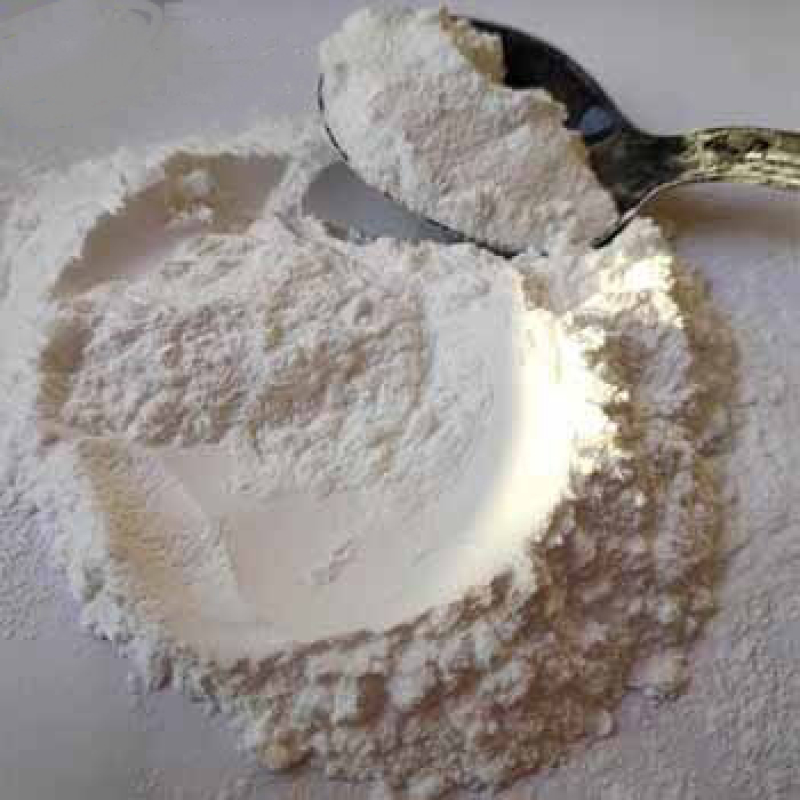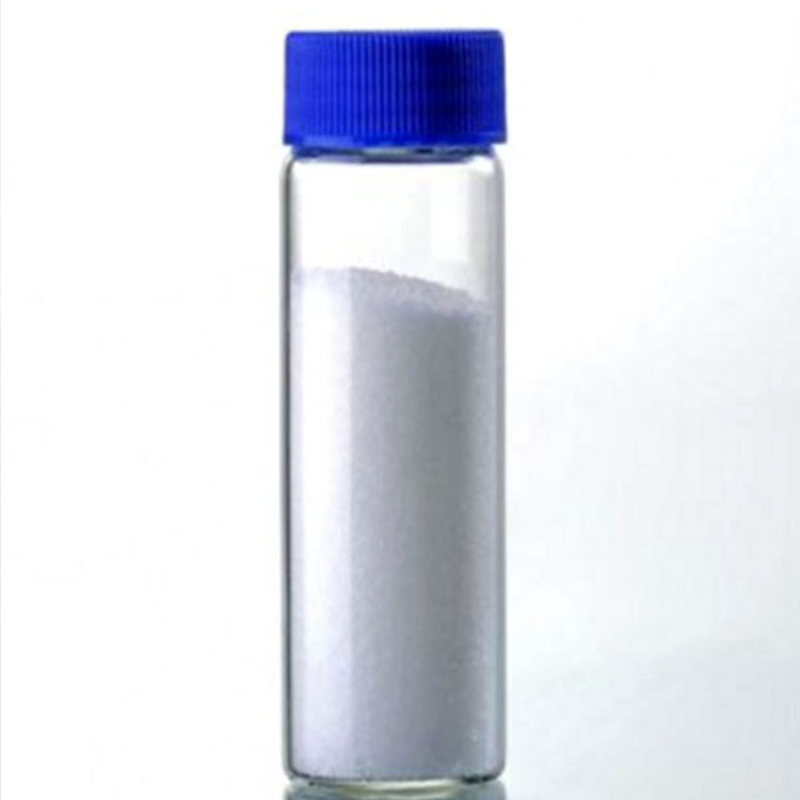Products Description of 1,3-Propanediol CAS#504-63-21,3-Propanediol (PDO) is mainly used to produce a new type of polyester, polytrimethylene terephthalate (PTT).
Contact Now
Products Description of 2-Bromo-2-nitro-1,3-propanediol CAS#52-51-72-Bromo-2-nitro-1,3-propanediol CAS#52-51-7 is an intermediateProduct Parameters of 2-Bromo-2-nitro-1,3-propanediol CAS#52-51-71. Names and IdentifiersName2-Bromo-2-nitro-1,3-propanediolSynonyms 1,3-Propanediol,2-bromo-2-nitro-2-Brom-2-nitropropan-1,3-diol2-Bromo-2-nitro-1,3-propanediol,BNPD,BNPK2-BroMo-2-nitropropane-12-bromo-2-nitropropane-1,3-diol2-Bromo-2-nitropropane-1,3-diol (Bronopol)3-diol(Bronopol)4-01-00-025014-01-00-02501(Beilstein Handbook Reference)b-Bromo-b-nitrotrimethyleneglycolBroken Ba
Contact Now
Products Description of Thiotriazolin CAS#357172-63-5Colorless liquidFactory and Equipment ShowFast delivery timeInventory 2-3 working days New production 7-10 working days
Contact Now
Products Description of 1,3-Butanediol CAS#107-88-0Transparent colorless hygroscopic viscous liquid with a weak special taste. Almost odorless. Boiling point 207.5℃, relative density (4:1.0059, refractive index (nD20) 1.4401, freezing point <-50℃, flash point 121.1℃. Has a certain antibacterial effect.
Contact Now
Products Description of GALL CAS#8008-63-7Ox bile, the bile or bile of cattle or buffalo. It has the effects of clearing the liver and improving eyesight, promoting bile and clearing the intestines, detoxifying and reducing swelling. Fresh cattle gallbladders are kidney-shaped, about 18 to 20 cm long, about 5 to 6 cm at the widest point, and become cystic with longitudinal wrinkles after drying.
Contact Now
Products Description of 1,3-Dioxan-2-one CAS#2453-03-4Used to synthesize polytrimethylene carbonate (PTMC)1,3-Dioxan-2-one Chemical PropertiesMelting point 45.0 to 49.0 °CBoiling point 135°C/4mmHg(lit.)density 1.200±0.06 g/cm3(Predicted)storage temp. under inert gas (nitrogen or Argon) at 2-8°Csolubility soluble in Methanolform powder to crystalcolor White to Almost whiteSafety InformationRisk Statements 22-36Safety Statements 24/25HS Code 29147000Factory and Equipment ShowFast delivery timeInventory 2-3 working days New production 7-10 wo
Contact Now
Products Description of Silver acetate CAS#563-63-3Silver acetate is an off-white solid powder at room temperature and pressure. It has average solubility in water. 1L of water can dissolve about 10.2g of silver acetate. It has good solubility in organic solvents such as ethanol, methanol and acetone.
Contact Now
Products Description of 1,3-Dichloroisoquinoline CAS#7742-73-61,3-Dichloroisoquinoline is a white to brown crystalline powder.1,3-Dichloroisoquinoline Chemical PropertiesMelting point 121-122 °C (lit.)Boiling point 307°C(lit.)density 1.407±0.06 g/cm3(Predicted)storage temp. Inert atmosphere,Room Temperatureform powder to crystalpka-1.49±0.50(Predicted)color Light yellow to Brown to Dark greenCAS DataBase Reference7742-73-6(CAS DataBase Reference)Safety InformationHazard Codes XiRisk Statements 36/37/38Safety Statements 26-36WGK Germany 3HS
Contact Now
Products Description of (2-Bromoethyl)benzene CAS#103-63-9β-Bromophenylethane is an important intermediate for the synthesis of highly efficient brominated flame retardant polybrominated styrene, and is also commonly used in the preparation of organic synthesis intermediates. For example, β-Bromophenylethane can be used to prepare 4-(4-phenylbutoxy)benzoic acid, an intermediate for preparing pranlukast. Pranlukast was first successfully developed by Ono Co., Ltd. of Japan as an anti-asthma drug and was launched in Japan in 1995.
Contact Now
Products Description of 1,3-Dioxan-2-one homopolymer CAS#31852-84-3Polylactic acid is also known as polyhydroxypropionic acid or polylactide. It is a biodegradable polymer material formed by the polycondensation of lactic acid monomers. It is soluble in solvents such as chloroform, acetone, dioxane, dimethylformamide, benzene, toluene, and insoluble in saturated alkanes such as petroleum ether. It has good biocompatibility and blood compatibility, good anticoagulant properties in vitro, can be degraded by the human body, and excreted from the body as carbon dioxide and water.
Contact Now
Products Description of 1,3-Dihydroxyacetone CAS#96-26-4Dihydroxyacetone is a naturally occurring ketose that is biodegradable, edible and non-toxic to the human body and the environment.
Contact Now
Products Description of Poly(L-lysine hydrobromide) CAS#25988-63-0Antioxidants, Chelating Agents, PreservativesPoly(L-lysine hydrobromide) Chemical Propertiesstorage temp. 2-8°Cform lyophilized powderStability:Stable. Incompatible with strong acids, strong bases. Safety InformationWGK Germany 3F 3-10Product Application of Poly(L-lysine hydrobromide) CAS#25988-63-0Only a trace amount of polylysine needs to be added to food to be effective, and it will not affect the taste of the food. It can be used as a natural preservative for food.
Contact Now
Products Description of (Z)-N-9-octadecenylpropane-1,3-diamineCAS#7173-62-8Colorless liquid(Z)-N-9-octadecenylpropane-1,3-diamine Chemical PropertiesBoiling point 435.6±28.0 °C(Predicted)density 0.851±0.06 g/cm3(Predicted)vapor pressure 0.002Pa at 20℃pka10.67±0.19(Predicted)Water Solubility 36mg/L at 23℃LogP0EPA Substance Registry SystemN-Oleyl-1,3-propanediamine (7173-62-8)Factory and Equipment ShowFast delivery timeInventory 2-3 working days New production 7-10 working days
Contact Now
Products Description of 2,4-Difluoro-alpha-(1H-1,2,4-triazolyl)acetophenone CAS#86404-63-9Pharmaceutical Chemical Intermediates2,4-Difluoro-alpha-(1H-1,2,4-triazolyl)acetophenone Chemical PropertiesMelting point 103-107 °C(lit.)Boiling point 388.0±52.0 °C(Predicted)density 1.39±0.1 g/cm3(Predicted)storage temp. 2-8°Csolubility Chloroform (Slightly), Methanol (Slightly)form Solidpka2.05±0.10(Predicted)color White to pale brownCAS DataBase Reference86404-63-9(CAS DataBase Reference)Safety InformationSafety Statements 24/25WGK Germany 3HS Cod
Contact Now
Products Description of Isopropyl alcohol CAS#67-63-0Isopropyl alcohol is also known as fire wine, dimethyl methanol, 2-propanol, English: isopropylalcohol, the simplest secondary alcohol, and one of the isomers of n-propanol.A colorless, flammable liquid with a strong odor, similar to the smell of a mixture of ethanol and acetone, but not very strong. It is soluble in most organic solvents such as water, alcohol, ether, benzene, chloroform, etc., and can be miscible with water, alcohol, ether, and can form an azeotrope with water.
Contact Now
Products Description of 2-(2-Chlorophenyl)acetonitrile CAS#2856-63-5o-Chlorophenylacetonitrile is a chemical with the molecular formula C8H6ClN and a molecular weight of 151.59.2-(2-Chlorophenyl)acetonitrile Chemical PropertiesMelting point 24 °C (lit.)Boiling point 240-242 °C (lit.)density 1refractive index 1.5425-1.5445Fp >110°Cstorage temp. Sealed in dry,Room TemperatureWater Solubility Insoluble in watersolubility Chloroform (Slightly), Methanol (Slightly)form powder to lump to clear liquidcolor White or Colorless to Light yellowFre
Contact Now
Products Description of Isopropyl alcohol CAS#67-63-0Isopropyl alcohol, also known as fire wine, is the simplest secondary alcohol and one of the isomers of n-propyl alcohol. It is a colorless, flammable liquid with a strong odor, similar to the mixture of ethanol and acetone, but not very odorous. It is soluble in most organic solvents such as water, alcohol, ether, benzene, chloroform, etc. It is miscible with water, alcohol, ether, and can form an azeotrope with water.
Contact Now
Products Description of 2,2-Dimethyl-1,3-dioxolane-4-methanol CAS#100-79-8(+,-)-2,2-Dimethyl-4-hydroxy-1,3-dioxane is a chemical.2,2-Dimethyl-1,3-dioxolane-4-methanol Chemical PropertiesMelting point -27℃Boiling point 189-191 °Cdensity 1.066 g/mL at 20 °C(lit.)vapor pressure 34Pa at 20℃refractive index n20/D 1.434Fp 176 °Fstorage temp. Sealed in dry,2-8°Csolubility 172g/l solubleform Liquidpka14.20±0.10(Predicted)color Clear colorlessPH4.0-7.5 (H2O)Water Solubility miscibleMerck 14,5213Safety Informa
Contact Now
Products Description of 1,3-Dimethylurea CAS#96-31-11,3-Dimethylurea, an organic chemical substance, CAS number: 96-31-1, molecular formula: C3H8N2O.1,3-Dimethylurea Chemical PropertiesMelting point 101-104 °C(lit.)Boiling point 268-270 °C(lit.)density 1.142vapor pressure 6 hPa (115 °C)refractive index 1.4715 (estimate)Fp 157 °Cstorage temp. Store below +30°C.solubility H2O: 0.1 g/mL, clear, colorlesspka14.57±0.46(Predicted)form Crystalscolor WhitePH9.0-9.5 (100g/l, H2O, 20℃)Water Solubility 765 g/L (21.5 ºC)BRN 17
Contact Now
Products Description of Dibenzoylmethane CAS#120-46-71,3-diphenyl-1,3-propanedione is commonly known as dibenzoylmethane.
Contact Now
Products Description of Ferrous sulfate heptahydrate CAS37782-63-0The chemical formula of ferrous sulfate is FeSO4. The most common one is ferrous sulfate FeSO4·7H2O containing seven crystal waters, commonly known as green vitriol. Light blue-green monoclinic crystal, density 1.898g/cm3, melts in crystal water at 64℃. Soluble in water, the aqueous solution is acidic. Gradually weathered in the air, and oxidized to yellow-brown basic iron salt.
Contact Now
Products Description of Boron Trifluoride Diethyl Etherate CAS#109-63-7Boron trifluoride is an important Lewis acid catalyst in organic synthesis and plays an important role in organic reactions (such as polymerization, hydrocarbonization, alkylation, isomerization, etc.). It is inconvenient to use trifluoride when it is in gaseous state. In order to adapt to the activity requirements of different reactions, according to the characteristics of trifluoride, it is often combined with polar oxygen- or nitrogen-containing compounds to convert it into a complex with strong stability.
Contact Now
Products Description of N,N-Diethyl-p-phenylenediamine sulfate CAS#6283-63-2White or light red crystals. Soluble in water, slightly soluble in alcohol. Easily oxidized to pink.
Contact Now
Products Description of Phenylhydrazine CAS#100-63-0 Phenylhydrazine, also known as hydrazine, was first synthesized by German organic chemist Hermann Emil Fischer in 1875 and is the first synthesized hydrazine derivative. It is a light yellow crystal or oily liquid at room temperature and a monoclinic prism crystal at low temperature. It is easily oxidized in the air and becomes dark brown or dark red. It is one of the derivatives of hydrazine, often abbreviated as PhNHNH2. It is slightly soluble in water and alkaline solution, and soluble in dilute acid.
Contact Now


































